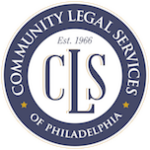Parent review feedback summary
- Parent reviewers overwhelmingly recommended Multidisciplinary Wraparound Legal Services, stating they and other impacted families would benefit from them.
- Reviewers emphasized the need and desire for parent involvement in this work, as well as ensuring that plans are tailored to meet each family’s specific needs and goals. One reviewer astutely said, “Please do not assume a set of generalized basic plans will work with families.” Another asked, “How do we provide services… and just support the families?”
- Parent reviewers expressed concerns over racism and mindset shift for workers in the system and how they could impact services.
What is the intervention?
On the same team and in one place, attorneys, paralegals, social workers, peer parents, and other advocates provide a holistic, multidisciplinary family defense model to help parents involved with the child welfare system maintain custody or reunite with their children.
One example is the Family Advocacy Unit (FAU) of the Community Legal Services of Philadelphia. They use a holistic, multidisciplinary family defense model to support parents as clients in child welfare and other cases.
The FAU team provides representation and support to help families in and out of court. The FAU represents parents in dependency court and helps parents during investigations of neglect or abuse that occur outside the court process. In addition to strong courtroom advocacy, staff assist parents to navigate DHS investigations, resolve disputes with DHS, and offer legal advice before a parent is taken to court and are appointed a lawyer. Attorneys attend parent-agency meetings, advocate for tailored service plans, and early on in a case can push for frequent visits, kinship placements, parent participation, and services specific to parent’s needs.
They also help parents access needed services, including to (re)connect utilities, find day treatment programs, and sign up for SNAP benefits, Medicaid, or other concrete supports.
Because the FAU is housed within the Community Legal Services of Philadelphia office with attorneys with a wide range of expertise, FAU parent clients can also get legal support in adjacent areas which become barriers in child welfare cases such as housing, criminal records, or employment.


What makes it a Bright Spot?
From 2007-2014 over 18,000 youth in child welfare were studied to discover the impact of multidisciplinary legal support. This evaluation found the wraparound legal intervention model to reduce the time youth spent in foster care by an average of four months. It also reunifies families more quickly and reduces costs.
One of the greatest benefits of this model is that under the umbrella of legal services, all at FAU workers have attorney client privilege.* Meaning, social workers and other staff at FAU are NOT mandated reporters. This in addition to peer advocates on staff builds trust with parent clients. Peer advocates tend to be out-of-the-box thinkers and having faced similar challenges, help parent clients avoid falling into despair.
* NOTE: Mandated reporting laws vary by state and may not extend client attorney privilege in this way.
What steps can you take?
Jurisdictions tend to build out legal representation for children and parents in child welfare proceedings bit by bit, making gains when there is local or state political will to improve legal representation.
- As a starting point, use this implementation guide from the Family Justice Initiative website
- Move toward funding wraparound legal support in your community. The Philadelphia Department of Human Services provides funding for FAU; other HS Departments could do the same.
- Build a case for multidisciplinary legal representation with wraparound services by documenting cost savings, providing examples of other jurisdictions utilizing this practice, and by telling stories about the impact of high-quality legal representation on client’s lives.
Supporting tools
These downloadable resources may help provide additional context and information about this family-approved resource for systems change.
Let us know any information to consider adding to this Bright Spots practice.
Share this Bright Spot with a colleague
Have an idea?

